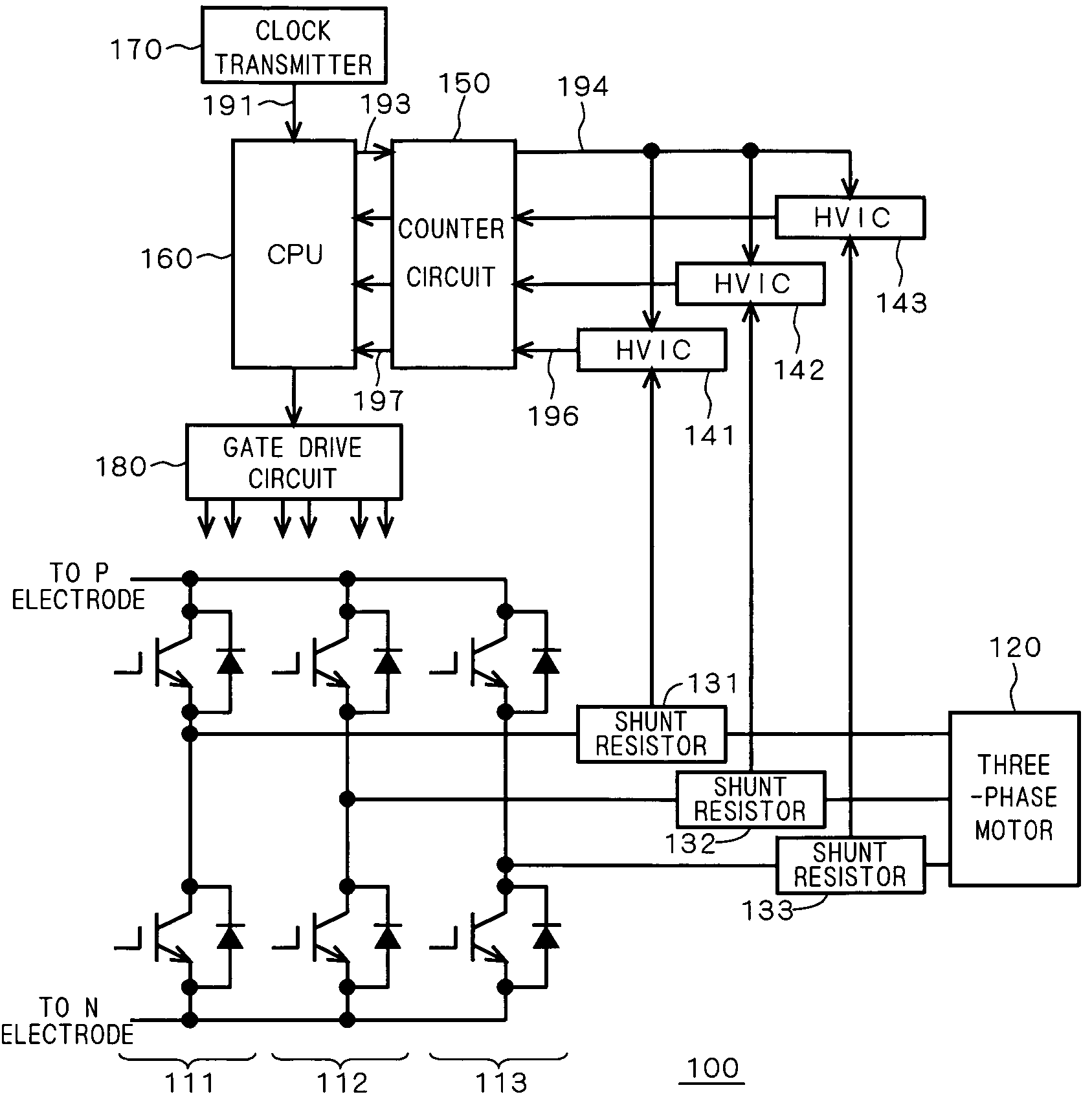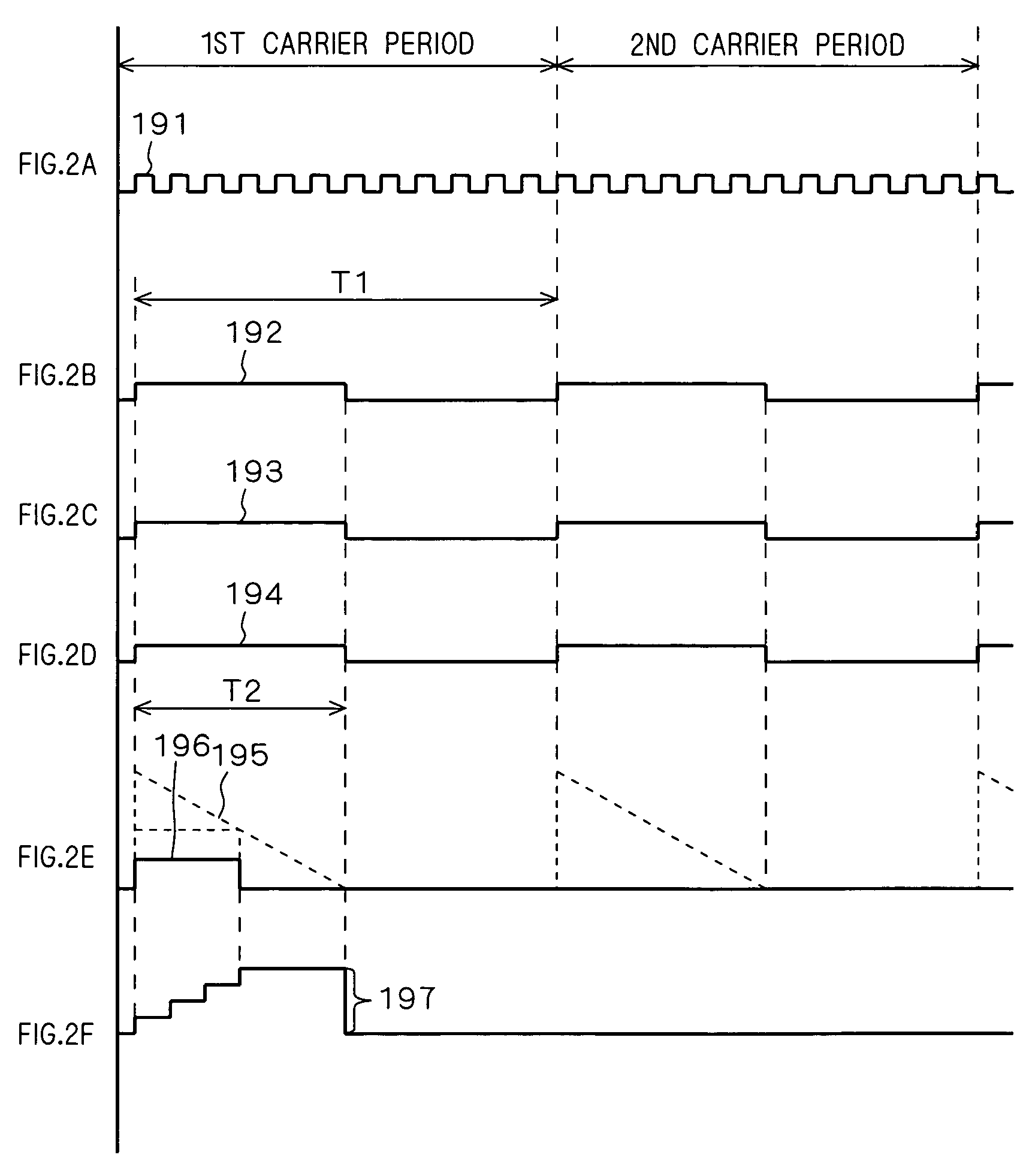Power semiconductor device
a technology of semiconductor devices and semiconductors, applied in the direction of electric variable regulation, process and machine control, instruments, etc., can solve the problems of reducing the accuracy of measurement, increasing the load on the cpu, and affecting the real time property, so as to achieve the effect of increasing the accuracy of measuremen
- Summary
- Abstract
- Description
- Claims
- Application Information
AI Technical Summary
Benefits of technology
Problems solved by technology
Method used
Image
Examples
Embodiment Construction
[0020][First Preferred Embodiment]
[0021]FIG. 1 shows the construction of a power semiconductor device 100 according to a first preferred embodiment of the present invention.
[0022]Referring to FIG. 1, inverter circuits 111 to 113 are connected to a P electrode and an N electrode, and supply current to the U, V and W phases, respectively, of a three-phase motor 120 to control the same. The inverter circuits 111 to 113 are connected to the three-phase motor 120 through shunt resistors 131 to 133, respectively. The shunt resistors 131 to 133 are connected to HVICs 141 to 143, respectively. The HVICs 141 to 143 are connected to a counter circuit 150. The counter circuit 150 is connected to a CPU 160. The CPU 160 is connected to a clock transmitter 170 and a gate drive circuit 180.
[0023]With reference to FIG. 1, voltages are developed across the respective shunt resistors 131 to 133, based on currents flowing to the U, V and W phases of the three-phase motor 120.
[0024]The operation of the...
PUM
 Login to View More
Login to View More Abstract
Description
Claims
Application Information
 Login to View More
Login to View More - R&D
- Intellectual Property
- Life Sciences
- Materials
- Tech Scout
- Unparalleled Data Quality
- Higher Quality Content
- 60% Fewer Hallucinations
Browse by: Latest US Patents, China's latest patents, Technical Efficacy Thesaurus, Application Domain, Technology Topic, Popular Technical Reports.
© 2025 PatSnap. All rights reserved.Legal|Privacy policy|Modern Slavery Act Transparency Statement|Sitemap|About US| Contact US: help@patsnap.com



